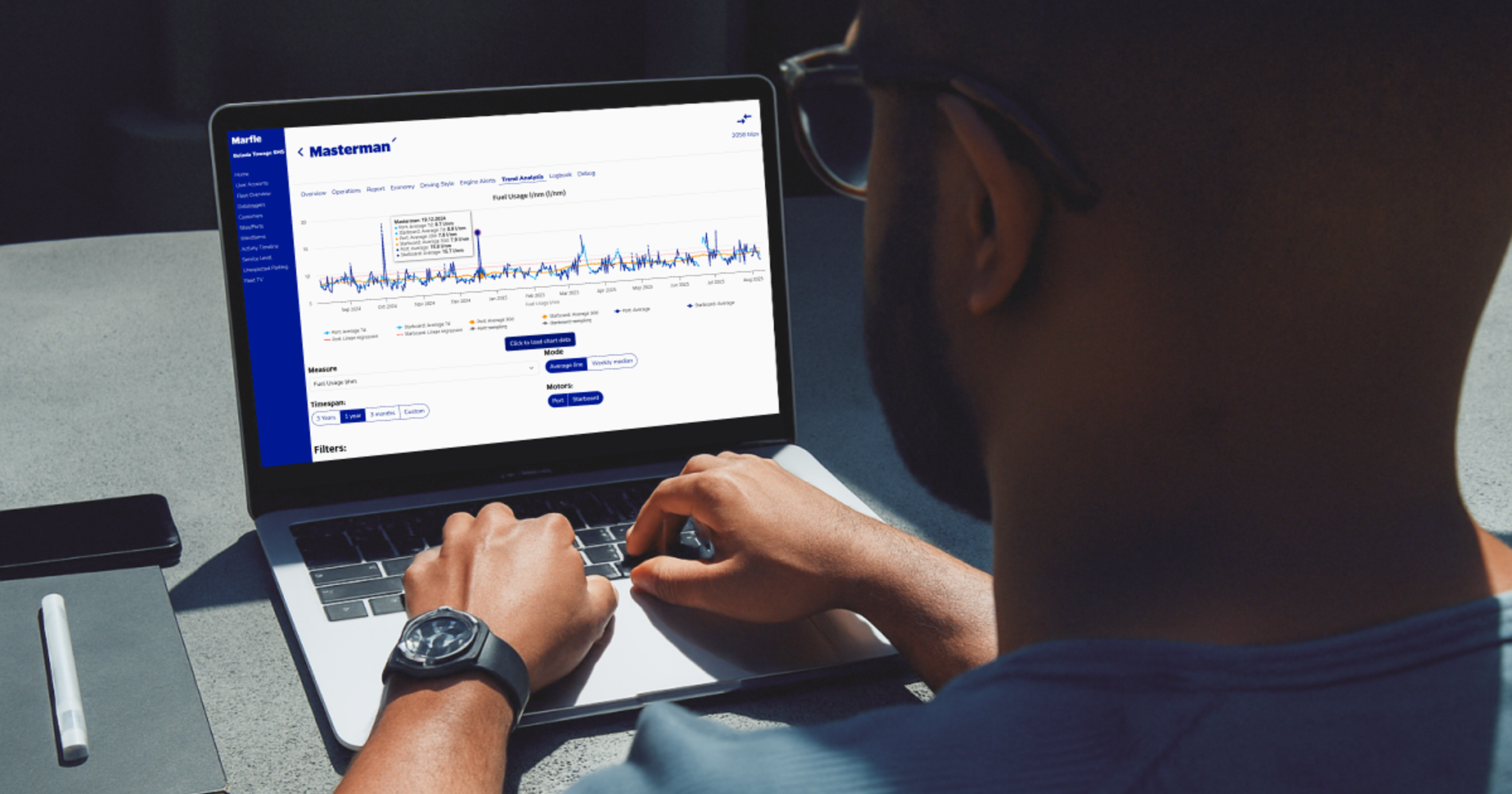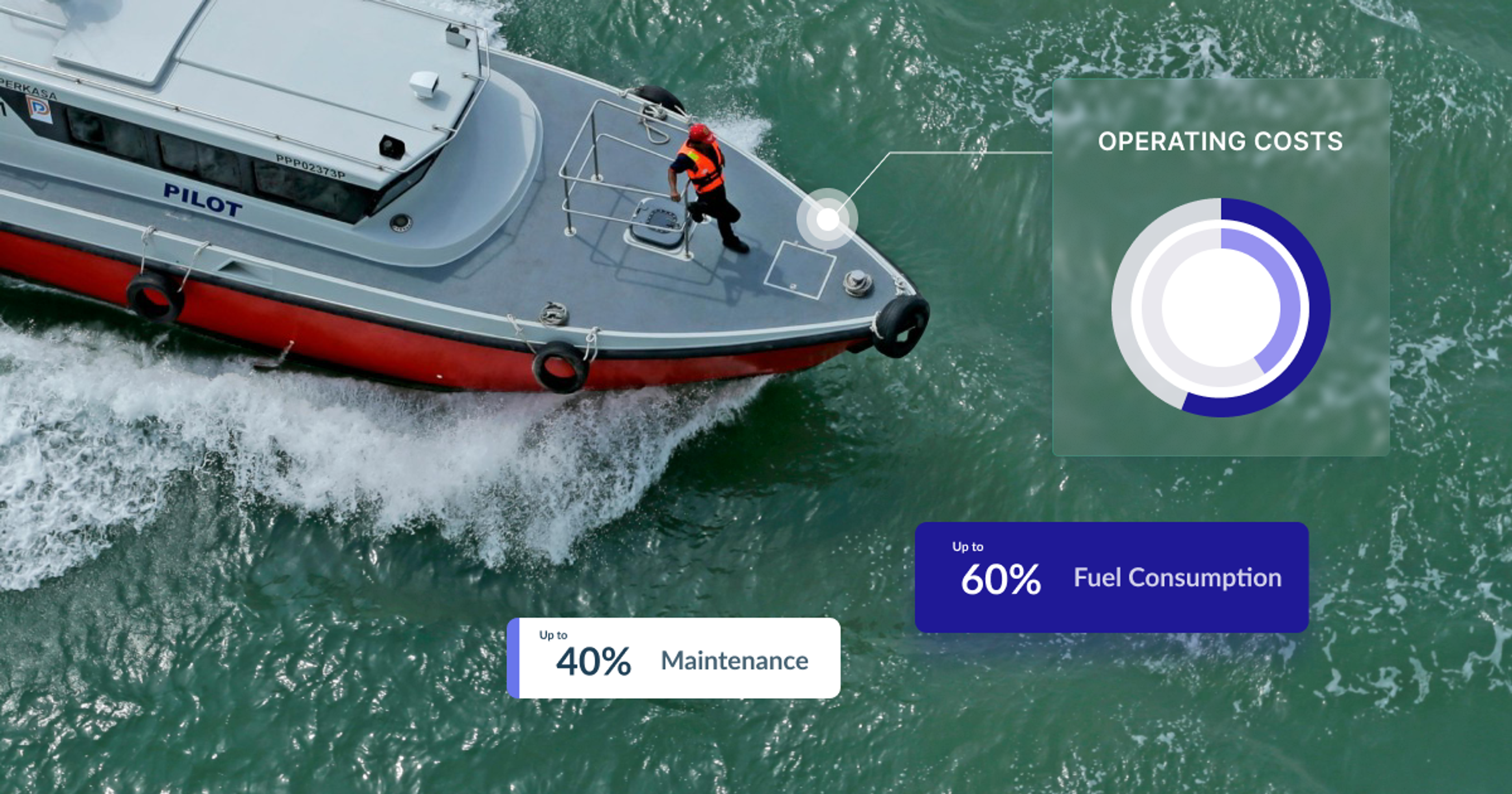Top Maritime KPIs to Enhance Fleet Efficiency and Compliance
Ana Rosa
••7 mins
Have you ever stopped to think about how many decisions you make in a single day?
Researchers estimate an average of 35,000 decisions each day, but those are only conscious decisions.
As a business owner or decision-maker, you want to make informed decisions that drive growth and success for your organisation. But when the time is short and pressure is mounting, the easiest route tends to be guesswork and intuition, leading to wasted resources and missed opportunities.
In this article, we break down key maritime KPIs every fleet manager should track, reveal how outdated manual processes are slowing down operations, and explore how modern fleet management systems are revolutionizing KPI tracking and decision-making at sea.
Why KPIs Matter in Maritime Operations
Key performance indicators(KPIs) are quantifiable metrics that help managers assess the success of operations over time for a specific goal.
In the highly volatile and ever-evolving maritime environment, by consistently record-keeping and monitoring these indicators, decision-makers can replace assumptions with data-driven decision-making(DDDM), strengthening the organization's competitiveness, enhancing the quality of high-stakes decisions, ultimately reflecting in optimised fleet performance, cost reduction, and greater sustainability.
As British physicist, Lord Kelvin, once said: "What you can't measure, you can't improve." And this is precisely why KPIs help you master data management.
5 KPIs that every Fleet Manager should track
Now that we've talked about what KPIs are and how they are essential for business growth and long-term resilience, imagine managing your operations without them - it's a bit like sailing with your eyes closed. You may be moving forward, but you have no idea if you're going in the right direction or getting closer to your goals.
So, what should be on your radar when it comes to the most relevant maritime KPIs? Let's dive in.
1. Fuel Consumption per Nautical Mile
Did you know fuel accounts for up to 60% of operating costs in some maritime companies? This makes it not only the biggest OpEx expense, but also the biggest opportunity for savings.
Measuring how much fuel is burned per nautical mile, and how this varies by vessel speed, RPM, and engine load, fleet managers with fuel analytics platforms such as Marfle can establish the optimal vessel speed, which will promote more sustainable and efficient navigation, providing significant fuel savings across the fleet when applied consistently.
Formula:
(Total Fuel Consumed) /(Total Distance in Nautical Miles) = Fuel Consumption per Nautical Mile
2. Engine Performance Efficiency
As the“heart” of a vessel, keeping the engine at the highest standards is inevitably linked to the safety, continuity, and reliability of your operations.
Over time, engine efficiency naturally declines due to factors such as hull fouling, insufficient maintenance, and operating at sub-optimal speeds.
Monitoring the engine load - the ratio of actual engine output to its maximum capacity - helps fleet managers understand how the vessel is being operated, detect unusual operating patterns, and make informed decisions to reduce mechanical strain.
Tracking engine load is not just about performance; it plays a crucial role in reducing fuel costs and emissions, both of which are subject to increasingly stringent IMO regulations.
3. Vessel Availability (% Uptime)
When it comes to operating a high-performing maritime fleet, vessel availability stands as an indispensable KPI, referring to the percentage of time a vessel is fully operational and available for service. The goal? Keep this metric as close to 100% as possible. If fleet managers themselves observe high uptimes, it is usually due to an effective maintenance plan, effectively used resources, and unexpected interruptions are kept to a minimum.
On the other hand, downtime - especially unplanned downtime - comes with a heavy price tag. It can cause lost revenue, missed business opportunities, and compromise the reliability and viability of your operations.
Formula:
(Total Uptime / Total Scheduled Time) × 100 = Availability %
4. CO₂ Emissions per Nautical Mile
From navigating ever-evolving regulations to meeting strict emission targets, the path toward sustainable maritime operations is a strategic necessity.
With the ever-evolving regulations to meet strict emission targets, closely monitoring and reporting CO2 emissions has become a strategic necessity. Beyond complying with IMO standards and local port restrictions, fleet managers gain visibility into the environmental footprint of each voyage, open the door to the adoption of carbon-reduction incentives, and future-proof your operations amid a tightening regulatory landscape.
Formula:
(Total CO₂ Emissions in kg) /(Total Distance in Nautical Miles) = CO₂ Emissions per Nautical Mile(kg/nm)
5. Maintenance Cost per Vessel
As a key driver of operational efficiency, crew safety, and vessel longevity, decision-makers are moving away from reactive to proactive management of assets. With up to 30% of operating expenses going toward maintenance, the pressure is on to manage costs without compromising reliability.
Tracking maintenance cost per vessel gives operators a clear, data-backed view of where the money is going, making it a vital budgeting and planning KPI. Beyond protecting your bottom line, smart maintenance practices reduce the risk of unexpected mechanical failures, boost fleet efficiency, and enhance passenger comfort.
Formula:
Total Maintenance Costs / Number of Vessels = Maintenance Cost per Vessel
Why Manual Data Management is Hurting Your Maritime Performance
The maritime industry is undergoing an unprecedented shift, driven by decarbonisation goals and relentless advancements in digitalization. Despite this exciting transformation, more than half(57%) of fleet managers still rely on traditional spreadsheets, paper logs, and a plethora of different data sources to track performance.
In a time where compliance is tightening and operational excellence is at the top of the maritime agenda, manual KPI tracking is not only prone to human error and extremely time-consuming, but also seriously compromises the accuracy and reliability of your data. In fact, it can quietly drain as much as 30% of a company’s annual revenue.
Not to mention how demotivating and tedious it is for crews to manually update spreadsheets or input data across multiple systems after each voyage.
As these limitations become harder to ignore, forward-thinking operators are switching to modern, digital fleet management systems, just like Marfle Fleet Analytics. The result? Well, that's the subject of our next section. Let's dive right in.
Effortlessly monitor your fleet KPIs with Marfle Fleet Analytics
Although the vast majority of decision-makers rely on manual data entry methods, a growing consensus is emerging: 73% of fleet professionals now recognize that the adoption of fleet management software is critical to data consolidation and driving operational success.
Marfle Fleet Analytics provides complete visibility by equipping decision-makers and operators with real-time vessel performance data, along with detailed historical records. Instead of having to grapple with endless paperwork that can easily be lost or damaged, manually updating
spreadsheets and isolated data systems that lack integration, Marfle provides a centralized platform that consolidates key performance indicators, such as vessel performance, fuel consumption, and engine health, into a streamlined, visually intuitive dashboard.
Replacing manual workflows and fragmented data with a simplified system gives fleet managers more than just free time; it increases clarity and control. With less focus on administrative and repetitive tasks and more on high-value operations, crews and shore-based teams can collaborate more effectively, make better, more informed decisions faster, and drive significant improvements in safety, operational efficiency, and vessel reliability.
Accessible from any device, Marfle allows you to generate up-to-date reports on fuel efficiency, consumption, emissions, and operations on a vessel and fleet level at the click of a button, simplifying compliance with stricter port requirements and environmental regulations.
• • •
In an industry where margins are tight and every decision influences performance, access to accurate and timely information is not a luxury; it is a strategic necessity. But who said that fleet management and KPI monitoring have to be complicated and daunting?
At Marfle, we're ready to help you run smarter, data-driven operations. Get in touch today and discover what your fleet can achieve with a fleet management system at your fingertips.

About the author
Ana Rosa
Ana is the Marketing Specialist at Marfle, bringing over three years of experience in content marketing, product marketing, graphic design, and SEO. With a strategic mindset, her focus is on positioning Marfle as a leader in smart fleet analytics, helping fleet managers streamline operations, improve efficiency and reduce CO2 emissions.
Keep reading
 Ana Rosa
Ana Rosa6 Proven Strategies to Reduce Maritime Fleet Operating Costs
Discover 6 practical, data-driven strategies to reduce maritime fleet operational costs, boost efficiency, and stay competitive in a changing industry.
 Ana Rosa
Ana RosaHow Vessel Motion Data Improves Crew Comfort, Safety & Performance
Discover how vessel motion affects crew comfort, health, and performance, and why monitoring it is key to safer, more efficient maritime operations.
 Farooq Al-Obaidi
Farooq Al-ObaidiBoluda SMS Towage tugs are now equipped with Marfle System
Discover how Boluda SMS Towage improves every trip with Marfle's advanced analytics, with over 15 tugs that consistently deliver top-notch service to their customers.